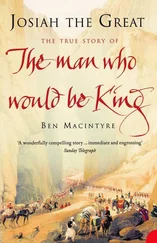From his earliest years, he had been aware that to be Piedmontese was to be born into the élite of the Kingdom of Italy. All the best regiments – the Bersaglieri, the Alpini, the cavalry – owed their origins to the old state of Piedmont, or the Kingdom of Sardinia as it was misleadingly named in its last stages. Even in the Thirties, the officer corps and the high civil service were still drawn disproportionately from the region. Italians from elsewhere, who may have thought that their own local achievements cast those of the Alpine region into shade, resented its lingering influence at the top of society. But only Piedmont had not slept during the long torpid centuries after the Renaissance and before the national awakening, when the peninsula languished into a dreamland arcadia amid the ruins of former greatness. In Turin, the seeds of a modern state were sown, nurtured by families such as the Guillets, created barons in the seventeenth century, who lived modestly on their own lands and equated their role with public service. When the movement for national unity began after the Napoleonic wars, only Piedmont could provide the leadership to free Italy from foreign rule; it alone survived while the territories of Venice and Florence, the Papal States and the Kingdom of Naples, and all the other smaller fragments, disappeared from the map forever.
Whenever the Italian tricolour was raised there was a reminder of this truth, for in the centre was the red shield and white cross of Savoy. To Amedeo, it was an emblem that demanded greater loyalty than the three colours themselves.
Neither the causes of the conflict with Ethiopia, nor the Guillets’ sense of dynastic loyalty, were uppermost in Amedeo’s mind as he lay in his cabin. It had been his decision to go to war; using family connections to fix a transfer to the Spahys di Libya, a regiment of colonial cavalry that was shortly to join the invasion force mustering in Eritrea. But having achieved his aim of serving under arms, he found it gave him little pleasure. Instead, a sense of guilt gnawed at him insistently as the old steamer clunked towards Tripoli. He had made a choice of a type that the Duce would doubtless describe as ‘irrevocable’, and there was no going back from it. Three weeks before, his life had seemed so simple and untroubled, as he worked his horses in preparation for the Olympics that were due to take place in Berlin in early 1936. Now, doubts and uncertainties surfaced. And he still could not quite believe that he had given up everything that he had achieved as a competition rider and had quit the national three-day eventing team. When he walked away from the training ground at Turin, he knew that the others in the team felt he had let them down and old friendships had been severed. The life he had been leading for the past five years, ever since he had been commissioned, was at an end. And they had been good years. Very good years.
With the decision made for him that he would have a military career, he had always known which part of the army he wanted to join. His older brother, Giuseppe, had opted for the artillery, but for Amedeo, who had ridden his father’s dressage horse from the age of five, it was the cavalry. Few occupations in Italy were then quite as glamorous. Only naval officers, who affected a certain inglese hauteur, or the pilots of the new Regia Aeronautica, the air force, came close. And the clothes were wonderful. Cavalry officers sauntered through piazzas wrapped in sky blue cloaks, wearing the dragoon’s helmets or the hussar’s fur busbies of the previous century. Olive-grey jodhpurs with double stripes in red were worn below a tunic that fastened at the neck, with just a hint of a white stock showing above. Riding boots, silver spurs and immaculate white leather gloves were part of the ensemble for a bella figura , even if the officers had only dismounted from a tram. And, of course, wherever they went, and at all times of the day, they held at their side their sabre. Even Amedeo had to concede that it was a little overdone, as he strapped his sword to the handlebars of his bicycle and pedalled off through the streets of Turin and Rome.
While the bright young things elsewhere were discovering jazz, experimental literature and sex, the ‘fathers’ were still in control in Fascist Italy. And Amedeo was an obedient son. The carnage of the First World War had not dented the army’s social allure, nor was there a feeling that a generation had been betrayed and led to senseless slaughter. On the contrary, the wider population, though resistant to Fascism’s efforts to make a cult of war, viewed Italy’s victory at the side of Britain, France and the United States as a source of pride, and believed that the common sacrifice of 600,000 dead had moulded the nation at last. Under the regime, the role of the army was even more exalted than had been the case in 1915, and at the top society’s rituals continued unchanged as though a reprise of the belle époque .
Amedeo’s outlook on the world perfectly complemented his anachronistic uniform and he fitted seamlessly into the make-believe, hand-kissing Ruritania of Italian society in the early Thirties. These were the last of Mussolini’s ‘years of consensus’, when the country seemed at ease with itself, the violence of the Fascist takeover in 1922 long forgotten and the leap into the abyss yet to come. There were no strikes, no social unrest and apparently no discord. Opponents of the regime either quietly left the country, or, if they openly defied it, were sent into internal exile, al confino , in the remote South. But on the whole, Italian Fascism, like the Catholic Church, contented itself with outward conformity, and seldom looked too closely at the real feelings that lay within. As for Amedeo, the strongest reproach he felt towards the regime was resentment that officers in the Fascist Milizia , the Duce’s private army of Black Shirts, were able to box three competition horses on trains free of charge, while he, a regular cavalry officer, could only box two.
Besides, there was always the king. Diffident and awkward and not quite five foot tall, Vittorio Emanuele III was hardly an inspiring figure for most ordinary Italians, although there were times, as during the First World War, when they loved him. Throughout his forty-six year reign, that spanned meeting Queen Victoria to suffering the snubs of Allied liaison officers at the close of the Second World War, he remained an enigmatic, and often barely visible head of state. But with the Fascists presiding over an ever-changing theatre of varieties, his presence at the top of society reassured many and what he represented was held in respect.
On occasion Amedeo was invited to little receptions at the Villa Savoia in Rome, where the royal family lived in preference to the grander Quirinale. Princess Jolanda, eight years his senior and the oldest daughter, whom he had known since childhood, became a close friend. An intrepid amazzone – as modern women riders were called, for they rode astride – she shared Amedeo’s passion for horses and his talent, once beating him in a jump-off when they competed against each other. He would join her set when riding out with the Rome Foxhunt, the fashionable winter pastime introduced in 1836 by Lord Chesterfield who, wearying of his wife’s convalescence from tuberculosis, had shipped his hounds from England. The hunt would gallop under the arches of aqueducts, and wait at the coverts as the hounds sniffed about the ancient ruins that abounded in the Roman campagna .
Amedeo was also friendly with the affable Crown Prince Umberto and his intellectual wife, Maria José of Belgium, whose lack of enthusiasm for Fascism was the subject of widespread gossip. There had been a dinner in a rambling Alpine castle above Pinerolo, after which they all had played a version of hide-and-seek, and the woman who would be the last queen of Italy gave herself away by squealing from behind a tapestry. He was fond, too, of the shy Princess Mafalda, newly married to the German Prince of Hesse, who offered sweet words of consolation whenever Tenente Guillet arrived, as was often the case, bruised or with an arm in a sling after a fall. He would bow over her hand and click his heels, little imagining that within a decade no trace would remain of his Ruritania, nor that Mafalda would die half-starved and abandoned in the concentration camp at Buchenwald.
Читать дальше












